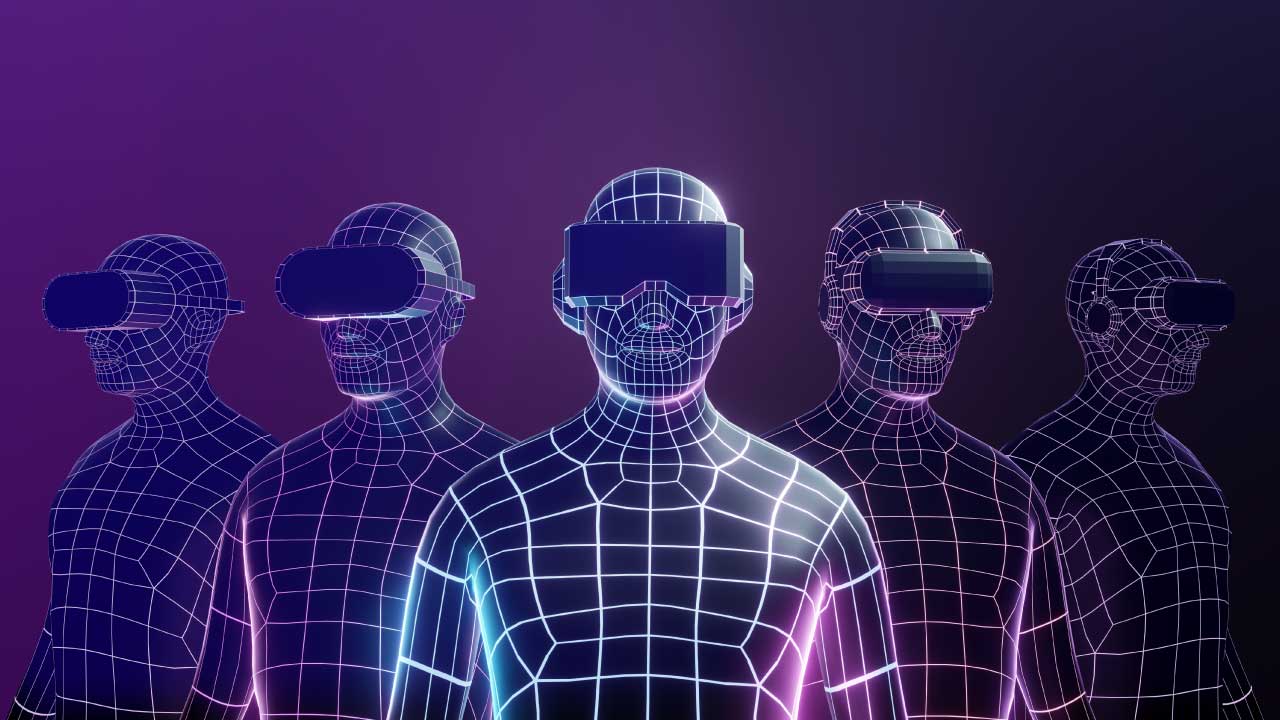Subscribe to the blog
Businesses are changing right now because of AI. Not tomorrow. Today. And large language models? They're the reason why. We're watching them write marketing campaigns, field customer questions at 2 AM, pump out working code, and help teams work way faster than we thought possible last year. So if staying competitive matters to you, getting what these systems actually do isn't something you can skip.
For dedicated learners who are prepared to transform their practice, formalized training can be a force multiplier. The need for AI-related skills is increasing more year-to-year, and with companies like Salesforce and Google taking on increasing amounts of staff in AI and other roles but still operating with talent shortages, organizations can work with specialized, structured programs to close the skills gap in much quicker timeframes. ATC's Generative AI Masterclass is a hybrid, hands-on, 10-session (20-hour) program that delivers no-code generative tools, applications of AI for voice and vision, as well as working with multiple agents using semi-Superintendent Design, and ultimately culminates in a capstone project where all participants deploy an operational AI agent (currently 12 of 25 spots remaining). Graduates will receive an AI Generalist Certification and have transitioned from passive consumers of AI and other technology to confident creators of ongoing AI-powered workflows with the fundamentals to think at scale. Reservations for the ATC Generative AI Masterclass to get started on reimagining how your organization customizes and scales AI applications are now open. Want to stop just reading about this and actually build something? That's what this kind of program does.
What is an LLM?
An LLM is an AI that learned from a crazy amount of text. We're talking billions and billions of words. Books. Websites. Research papers. Code. Pretty much anything written down. The "large" part? That's about two things. How much data went into training it? And how many parameters it has, basically, all the patterns it picked up inside its neural network.
Here's what you need to know right away. These systems don't "understand" words like we do. They're really, really good at matching patterns. What they do is guess what word, actually, what token should come next. After seeing tons and tons of text, they figure out how words, phrases, and ideas connect. And honestly? They've gotten so good at this that what comes out often sounds like a person wrote it.
This whole modern LLM thing kicked off in 2017. There was this research paper called "Attention is All You Need." That's where the transformer setup came from. OpenAI put out GPT-3 in 2020. But ChatGPT—the version they trained with human feedback that dropped late 2022—that's what got everyone's attention. Then things moved fast. GPT-4 showed up in March 2023. GPT-4 Turbo came in November 2023. GPT-4o landed in May 2024 (that "o" means omni, which means it handles more than just text). Anthropic put out Claude 3.5 Sonnet June 2024, then Claude 4.5 Sonnet September 2025. Google's been pushing their Gemini stuff forward too, with Gemini 2.5 Pro and Flash coming out through 2025.
How LLMs actually work
Let's break this down without getting into complicated math.
Tokens
LLMs don't work with whole words. Text gets chopped up into smaller bits called tokens. Sometimes a token is a whole word like "cat." Sometimes it's part of a word like "ing." Sometimes just one character. Each model has thousands of these tokens in its vocabulary. Before anything happens, all text gets turned into a string of token IDs.
Think of it like puzzle pieces. The model learns which pieces usually go together. And in what order? This way of doing things means it can handle new or weird words by breaking them into chunks it already knows.
Transformers and attention
The transformer setup is what makes all this work. At the core, there's something called attention. Basically, it's how the model decides which parts of what you gave it actually matter when it's trying to figure out the next token.
Easy way to picture it: you're reading something and trying to guess what word's coming next. Your brain doesn't treat every word before it the same way. You focus more on recent words. On words that make sense in context. The attention thing does that, just with numbers.
Transformers run multiple attention calculations at once. That's called multihead attention. Each "head" looks at different stuff. One might track grammar. Another might follow when topics shift. Running all this at the same time? That's what makes transformers work well and work fast.
Embeddings
Before we get to processing, tokens become embeddings. These are just lists of numbers that capture what words mean. Words that mean similar things get similar number patterns. "Cat" and "kitten" have number patterns close to each other. "Cat" and "airplane" are far apart.
The model learns these during training. It adjusts them so tokens showing up in similar places move closer together in this math space. This number version of meaning is how LLMs do analogies, translations, and find similar stuff.
Pretraining
Pretraining is where the model learns general language stuff. It gets fed huge datasets. Then it practices predicting the next token. Over and over. Billions of times. This teaches grammar. Facts. How to reason. Unfortunately, it also picks up biases from whatever was in the training data.
Pretraining costs serious money. Millions of dollars in computing for the big models. But when it's done, we've got something that understands language broadly and can adapt to specific jobs.
Training and alignment
Raw pretrained models aren't ready to use yet. They need more training to make them helpful, safe, and honest. That's alignment.
Supervised fine-tuning
After pretraining, models go through supervised fine-tuning. Human experts write example conversations showing how the model should handle different questions. The model learns to copy these good responses.
This part teaches it to follow instructions. Keep conversations on track. Use the right tone.
RLHF
Reinforcement Learning from Human Feedback. RLHF for short. This has become huge. How it works: the model creates several responses to the same prompt. Human evaluators rank them from best to worst. That preference data trains a reward model that can predict which responses people will like.
Then the language model gets optimized to maximize that reward. RLHF turned GPT-3 into ChatGPT. Same basic model underneath. Completely different experience for us.
One problem, though. Human evaluators often like confident, detailed answers even when a careful "I don't know" would be better. So models learn to sound confident instead of admitting uncertainty. Right now, in 2025, researchers are working on training methods that reward models for saying when they're not sure.
Safety and evaluation
Building LLMs now includes a lot of safety testing. Models get checked on benchmarks for reasoning (GPQA, MMLU), coding (HumanEval), and following safety rules. Anthropic calls Claude 4.5 their "most-aligned frontier model," talking up both what it can do and how safe it is.
Testing keeps going. New benchmarks keep finding problems even in the newest models. 2025 benchmarks like CCHall check reasoning across different types of content. Mu-SHROOM tests hallucinations in multiple languages.
What can these things do now
LLMs have gone way past just finishing your sentences. What's that mean for us in practice? A lot.
Multimodality
The best models don't just do text anymore. GPT-4o handles text, images, and audio together. Claude 3.5 Sonnet works with text and images and really gets what's in pictures. Google's Gemini models take in text, images, audio, and even video.
This opens up new things we can do with them. Looking at medical scans. Pulling data from screenshots. Describing images for people who can't see them. Creating responses based on audio.
Context windows
Early LLMs could only "remember" a few thousand tokens at once. Modern ones can handle way more—that's the context window, how much text they can look at simultaneously. GPT-4o and GPT-4 Turbo do 128,000 tokens. That's like 300 pages. Claude models go up to 200,000 tokens. Some Gemini versions support a million tokens in preview.
Bigger context windows mean we can feed them entire codebases. Long documents. Extended conversations. And they won't lose track.
Agents and using tools
LLMs are getting deployed as agents more and more. These are systems that plan, use tools, and handle multi-step work. Instead of just answering, agent-capable models can call functions, search the web, run code, and talk to APIs.
OpenAI's Responses API has web search built in for GPT-4o and GPT-4o mini. Claude 3.5 Sonnet brought in an "Artifacts" feature that makes the interface a workspace where code and documents get created live. Platforms like LangChain and Microsoft's AutoGen use these agent abilities to let different AI agents work together on complicated tasks.
Reasoning modes
Some newer models have explicit reasoning modes. Gemini 2.5 models include "adaptive thinking". This shift toward giving models more "thinking time" before they respond? That's changing how LLMs tackle hard problems.
How organizations use them
Let's look at what's happening in the real world with LLMs.
Customer support automation
This gets some of the best returns on investment. LLM-powered support handles 60-80% of routine stuff. Order tracking, returns, FAQs, and password resets. No person needed. Unity sent 8,000 tickets to self-service and saved $1.3 million. Support people using AI tools save about 2 hours and 20 minutes every day.
These systems understand natural language. They pull info from knowledge bases. They know when to send complex stuff to actual humans. They give 24/7 support in multiple languages without needing to staff up proportionally.
Content and marketing
LLMs speed up making content across all formats. Blog posts. Social captions. Email campaigns. Product descriptions. They're not replacing writers. They're helping writers handle first drafts, come up with variations, get past the blank page.
Marketing teams use LLMs for A/B test versions, personalizing stuff at scale, adapting content for different channels or audiences.
Code generation and tech work
Models like Claude 3.5 Sonnet score really high on coding tests. Solving 64% of problems in agent-based coding checks. Developers use LLMs to write repetitive code, find bugs, translate between programming languages, and update old systems.
The benefit isn't getting rid of developers. It's freeing them up to focus on architecture and logic while AI handles the repetitive stuff.
Internal automation
Companies use LLMs for looking through documents, summarizing meetings, pulling data from messy sources, and making reports. These internal uses might not sound exciting. But they add up to real productivity gains.
What teams should do next?
How to start using LLMs the right way.
- Start with low-risk tests. Try LLMs on internal stuff before customer-facing work. Use them to summarize documents, draft emails, and generate test data.
- Set evaluation criteria. Define what "good" looks like for each use case. Track accuracy, relevance, tone, and safety.
- Build human review into workflows. LLMs work best when people check the output, especially for important decisions. Design systems that combine AI speed with human judgment.
- Handle data governance. Decide what data can go to external APIs. Think about data retention policies and compliance needs.
- Get your team up to speed. The best rollouts happen when teams understand both what works and what doesn't. Not everyone needs to be an AI engineer. But basic understanding helps.
- Keep improving based on real use. Early versions will have gaps. Build feedback loops. Keep making it better.
Wrapping up
Large language models represent a real shift in how we work with computers and information. They're not magic. They're sophisticated pattern-matching systems trained on huge amounts of text, refined through human feedback, and increasingly capable of handling different types of content and acting like agents. For product managers, marketers, business leaders, and developers, understanding how LLMs work and where they shine (and where they struggle) has become necessary.
The tech will keep getting better. Context windows will grow. Hallucinations will drop. Reasoning will improve. But the core opportunity is here now. Companies that learn to work well with LLMs get real advantages in speed, scale, and what they can do. For dedicated learners who are prepared to transform their practice, formalized training can be a force multiplier. The need for AI-related skills is increasing more year-to-year, and with companies like Salesforce and Google taking on increasing amounts of staff in AI and other roles but still operating with talent shortages, organizations can work with specialized, structured programs to close the skills gap in much quicker timeframes. ATC's Generative AI Masterclass is a hybrid, hands-on, 10-session (20-hour) program that delivers no-code generative tools, applications of AI for voice and vision, as well as working with multiple agents using semi-Superintendent Design, and ultimately culminates in a capstone project where all participants deploy an operational AI agent (currently 12 of 25 spots remaining). Graduates will receive an AI Generalist Certification and have transitioned from passive consumers of AI and other technology to confident creators of ongoing AI-powered workflows with the fundamentals to think at scale. Reservations for the ATC Generative AI Masterclass to get started on reimagining how your organization customizes and scales AI applications are now open. Going from watching this happen to building it yourself? Start here.




